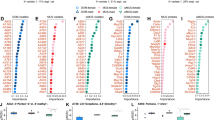Abstract
Urine samples from C3H congenic house mice (Mus domesticus) differing only at thet complex were examined by capillary gas chromatography to assess variations in the volatile components that may cause olfactory discrimination between animals bearingt lethal and+(wild-type) haplotypes. Urine was collected from 192 males and females varying in age from 1 to 9 months. C3H congenic mice that have the same genetic background at all loci but differed in theirt complex genotypes: +/ +, +/tw1,T/t w1, T/+ were used. No urinary volatiles were unique to thet complex. However, significant differences amongt complex genotypes and among ages occurred for concentrations of 12 male volatiles and four female volatiles. Usually young males (1–2 months of age) had significantly higher concentrations of cyclic enol ethers and ketones than older males (4–9 months of age). Moreover, some urinary volatiles (cyclic enol ethers, one ketone, dehydrobrevicomin, and thiazoline) were excreted in the urine of T/+and/orT/t males in significantly higher concentration than in the urine of +/+ males. Age andt complex genotype influences on the urinary volatiles in females were observed for four ketones. Gas chromatography of urinary components has the potential to be used in field studies of thet complex because the two t complex genotypes found in wild populations, +/+ and +/t, had significant differences in concentration for two males volatiles and three female volatiles.
Similar content being viewed by others
References
Andreolini, F., Jemiolo, B., andNovotny, M. 1987. Dynamics of excretion of urinary chemosignals in the house mouse (Mus musculus) during the natural estrous cycle.Experientia 43:998–1002.
Bennett, D. 1975. The T-locus of the mouse.Cell 6:444–454.
Bennett, D. 1978. Population genetics ofT/t complex mutation, pp. 615–632,in Origins of Inbred Mice, H. Morse (ed.). Academic Press, New York.
Bruck, D. 1957. Male segregation ratio advantage as a factor in maintaining lethal alleles in wild populations of house mice.Proc. Natl. Acad. Sci. U.S.A. 43:152–158.
Drickamer, L.C., andLenington, S. 1987. T-locus effect on the male urinary chemosignal that accelerates puberty in female mice.Anim. Behav. 35:1581–1582.
Egid, K., andLenington, S., 1985. Responses of male mice to odor of females: Effects ofT− and H-2-locus genotype.Behav. Gen. 15:287–295.
Harvey, S. 1988. Chemical investigations of the pheromone system of the house mouse. PhD thesis. Indiana University, Bloomington.
Harvey, S., Jemiolo, B., andNovotny, M. 1989. Pattern of volatile compounds in dominant and subordinate male mouse urine.J. Chem. Ecol. 15:2061–2072.
Jemiolo, B., Alberts, J., Sochinski-Wiggins, S., Harvey, S., andNovotny, M. 1985. Behavioral and endocrine responses of female mice to synthetic analogues of volatile compounds in male urine.Anim. Behav. 33:1114–1118.
Jemiolo, B., Harvey, S., andNovotny, M. 1986. Promotion of the Whitten effect in female mice by synthetic analogs of male urinary constituents.Proc. Natl, Acad. Sci. U.S.A. 83:4576–4579.
Jemiolo, B., Andreolini, F., Wiesler, D., andNovotny, M. 1987. Variation in mouse (Mus musculus) urinary volatiles during different periods of pregnancy and lactation.J. Chem. Ecol. 13:1941–1956.
Klein, J. 1975. Biology of the Mouse Histocompatibility-2 Complex. Springer Verlag, Berlin, pp. 251–274.
Lenington, S. 1983. Social preference for partners carrying “good genes” in wild house mice.Anim. Behav. 31:325–333.
Lenington, S., Egid, K., andWilliams, J. (1988a). Analysis of a genetic recognition system in house mice.Behav. Genet. 18:549–564.
Lenington, S., Franks, P., andWilliams, J. (1988b). Distribution of t-haplotypes in nautral populations of wild house mice.J. Mammal. 69:489–499.
Novotny, ML, Lee, M.L., andBartle, K.D. 1974. Some analytical aspects of the chromatographie headspace concentration method using a porous polymer.Chromatographia 7:333–338.
Novotny, ML, Harvey, S., Jemiolo, B., andAlberts, J. 1985. Synthetic pheromones that promote inter-male aggression in mice.Proc. Natl. Acad. Sci. U.S.A. 82:2059–2061.
Novotny, M., Jemiolo, B., andHarvey, S. 1991. Chemistry of rodent pheromones: Molecular insights into chemical signaling in mammals,in D.M. Macdonald (ed.). Chemical Signals in Vertebrates, V. Oxford University Press, New York. In press.
Schwende, F.J., Jorgenson, J.W., andNovotny, M. (1984a). A possible chemical basis for histocompatibility-related mating preference in mice.j. Chem. Ecol. 11:1603–1615.
Schwende, F.J., Wiesler, D., andNovotny, M. (1984b). Volatile compounds associated with estrus in the mouse: Potential pheromones.Experientia 40:213–215.
Silver, L.M. 1985. Mouset haplotypes.Annu. Rev. Genet. 19:179–208.
Yamazaki, K., Yamaguchi, ML, Andrews, P.W., Peake, B., andBoyse, E.A. 1978. Mating preference of F2 segregants of crosses between MHC-congenic mouse strains,Lmmunogenetics 6:253–259.
Yamazaki, K., Yamaguchi, M., Baranoski, L., Bard, J., Boyse, E.A., andThomas, L. 1979. Recognition among mice: evidence from the use of a Y-maze differentially scented by congenic mice of different major histocompatibility types.J. Exp. Med. 150:755–760.
Zar, J.H. 1984. Biostatistical Analysis. Prentice-Hall, New York.
Author information
Authors and Affiliations
Additional information
We dedicate this paper to the memory of Dorothea Bennett.
On leave from the Environmental Protection Institute, Ministry of Light Industry, Beijing, China.
A.E.M.B. supported in part by NSF BSR 8909172.
Rights and permissions
About this article
Cite this article
Jemiolo, B., Xie, T.M., Andreolini, F. et al. Thet complex of the mouse: Chemical characterization by urinary volatile profiles. J Chem Ecol 17, 353–367 (1991). https://doi.org/10.1007/BF00994338
Received:
Accepted:
Issue Date:
DOI: https://doi.org/10.1007/BF00994338




